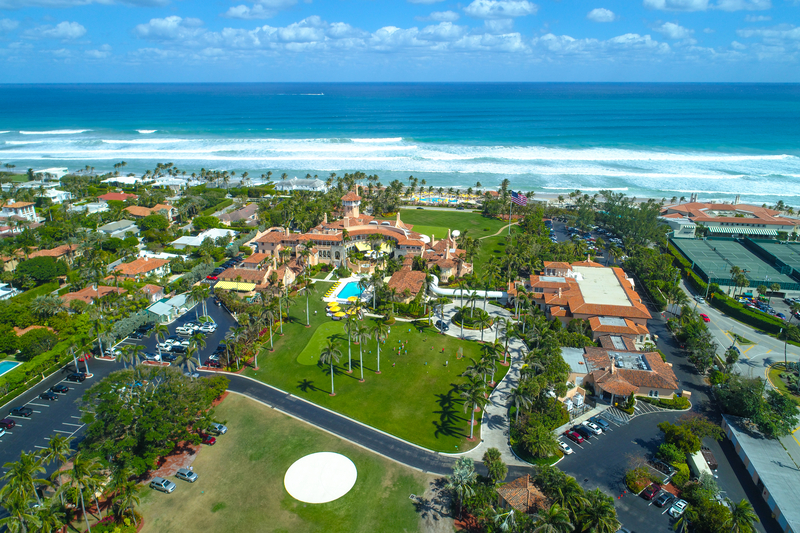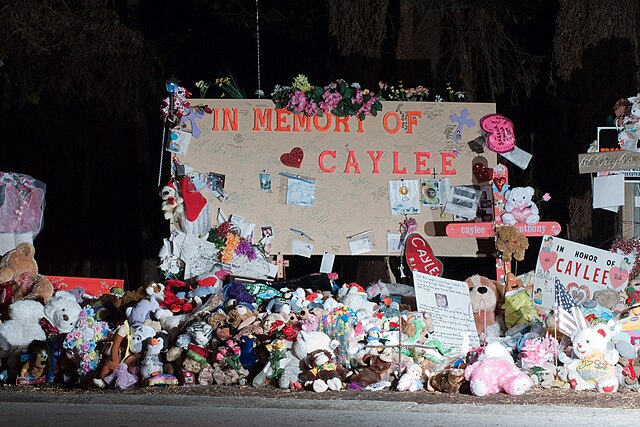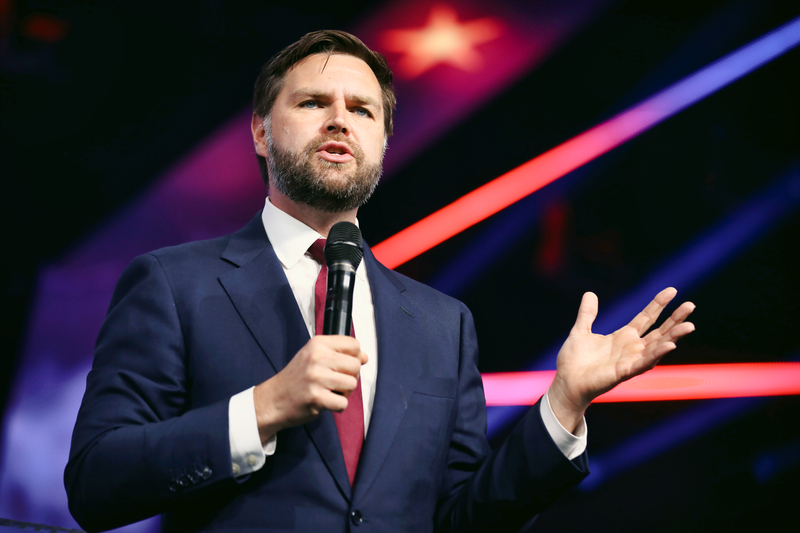God Save Us

I’m just a plainspoken Colorado criminal defense lawyer, but the way I see it…
Does God take an interest in criminal justice and human rights?
If He, She, or They did, would there even be a reason to write about criminal justice and human rights?
A bit more than a week ago, The Atlantic magazine asked a question like that: “Did God Save Donald Trump?” An unsurprising number of people believe God did just that. That it wasn’t that the registered Republican who tried to kill him had voted more times in his young life than he had pulled the trigger of the weapon he chose. No, “it was God and God alone,” said the president of the Southern Baptist Theological Seminary, God who Personally spared the convicted felon and sexual abuser and somehow overlooked the family man with the clean record.
Me, I haven’t listened to a Southern Baptist since the ones who told my pre-adolescent brother and me that if we didn’t baptize into the faith we’d burn in hell like our mother who only weeks before converted to Catholicism on her death bed (and me, I took the paved road).
Is it lack of divine interest that accounts for laws that now prohibit Afghan women from speaking in public, from singing or reading aloud even in their own homes, from exposing any part of their bodies, even faces, in public lest they lead the apparently helplessly weak Taliban men unto temptation?
Is it for lack of divine interest that children hunger, that people slaughter each other, abase each other?
On the day that Donald Trump was shot at, one hundred seventy thousand seven hundred ninety-one people died, virtually every one of them dear to someone.
To suggest that God would let every one of those dear ones go, and not that man, not that man, is to seriously undervalue whatever god you do or do not believe in.
Letter from Mar-a-Lago

I’m just a plainspoken Colorado criminal defense lawyer, but the way I see it…
I was rather stunned to see this from the former president of the United States:

He posted it on his Truth Social platform. So I dug around the internet to see if he had written anything else about this new leaf he seems to have turned over, and found this:

I don’t know. Seems heartfelt. Think there’s still hope for this guy?
Letter from Los Angeles — Part Two

Editor’s Note: Last month Aryn Z. Phillips and her father Mark J. Phillips shared here the first part of what seemed the impossibly callous murder of a child by its mother, adapted from their book “Trials of the Century.”
Here is the second part, the tale of the trial and its seemingly impossible verdict.
Aryn is a Professor of Public Health at the University of Illinois. Mark is a shareholder at the law offices of Lewitt Hackman in Encino, California.
On July 15, 2008, a call by Cindy Anthony to 911 operators in Orlando, Florida, reported that her two-year-old granddaughter, Caylee Anthony, was missing and asked that police arrest the child’s mother, Cindy’s daughter Casey Anthony. A twenty-two-year-old irresponsible party girl, Casey couldn’t or wouldn’t explain what had happened to little Caylee. What had started as an odd local story in the Orlando newspapers quickly caught the attention of the nation, fascinated by a missing child and revolted by a mother who couldn’t be troubled for more than a month to report the alleged kidnapping of her daughter. Amid this relentless national publicity, Casey was arrested and charged with murder.
Over the next twenty-four months, the prosecution team, led by Linda Drane Burdick, painstakingly built their case on the slimmest of circumstantial evidence and Casey’s trail of lies. A strand of hair from the car trunk was microscopically similar to hair taken from Caylee’s hairbrush. Experts found traces of chloroform in the trunk, and the computer to which Casey had access showed internet searches for chloroform, neck-breaking, and suffocation. Duct tape on the child’s skull included residue of a heart-shaped sticker, and a Winnie-the-Pooh blanket found at the crime scene matched Caylee’s bedding.
Casey’s defense team was captained from the day after her arrest by Jose Baez, a forty-year-old local lawyer from Puerto Rico by way of the Bronx, who had dropped out of high school in the ninth grade, went back to obtain an equivalency degree, served in the navy, and after discharge earned degrees from Florida State and St. Thomas University School of Law in Miami Gardens. A practicing lawyer only three years at the time of his retention by Casey Anthony, the prosecution and the press derided him for his limited experience and troubled background. Nevertheless, Baez set about constructing a defense strategy based on the refutation of each and every piece of prosecution evidence. With no confession, no witnesses, and no provable cause of death, Baez believed that he could demonstrate reasonable doubt. Short of money for attorneys and experts, Casey sold pictures of Caylee to ABC for $200,000.
But long before jury selection began on May 9, 2011, the media had pronounced Casey guilty, championed by self-proclaimed victims’ rights TV advocate Nancy Grace, host of cable’s HLN. A former prosecutor, Grace had started her media career with TruTV, successor to CourtTV, which had come into its own covering first the Menendez brothers and then O.J. Simpson. By the time of Caylee’s death Nancy Grace had been on television more than twelve years. One of the first to report on Caylee’s disappearance, over the course of the investigation and trial she devoted hundreds of segments of her show to the Anthonys, reporting under the banner of “Justice for Caylee” and derisively calling Casey the “Tot Mom”.
By the time the trial commenced before Judge Belvin Perry in May of 2011, media attention in Orange County, Florida, was so pervasive that jurors had to be brought in from neighboring Pinellas County. On the first day of jury selection, an entire panel of fifty potential jurors had to be dismissed as tainted. With jury selection lagging and the initial trial date lost, Judge Perry lectured the attorneys that he would not tolerate further delays in the start of trial, which he set for May 23rd, scheduled to be held six days a week, Sundays excepted, until completed. The jury was sequestered throughout.
The defense turned the case inside out on the first day. “This is not a murder case,” attorney Baez told the jury in his opening statement. “It is a sad, tragic accident.” Young Caylee accidentally drowned in the family swimming pool on June 16, 2008, he explained. She was found by George, and her father hid the body in the woods near the house. Threatened by George that she would go to jail for child neglect, Baez argued, Casey failed to report the death and went on with her life. Acknowledging her pattern of lies, he told the jury that Casey was cowed by a lifetime of sexual abuse. George had been abusing her since she was eight, he told them, as had her older brother Lee. Baez told the jury that the FBI had conducted genetic testing to see if Lee was in fact Caylee’s father.
Disgusted and enthralled, Americans couldn’t turn away. “It’s been a day of bombshells,” reported the Orlando Sentinel.
Opening statements concluded, the prosecution presented fifty-nine witnesses over the next three weeks, beginning with George Anthony, who denied both the drowning and the sexual abuse. Forensic experts testified to the condition of the remains and the duct tape on the skull, casting doubt on an accidental death. “There is no child that should have duct tape on its face when it dies,” chief medical examiner Jan Garavaglia testified. A computer expert testified that someone had searched for “chloroform” eighty-four times on the desktop computer in the Anthony home. Other experts testified to the manner of death, the presence of chloroform, and the smell of decomposition of human flesh. Friends and acquaintances were called to illustrate her dissolute lifestyle during the thirty-one days that Caylee’s absence went unreported, including photos of Casey out shopping at numerous stores and dancing at the Fusion nightclub in a hot body contest.
The defense responded with forty-seven witnesses over two weeks of testimony. Experts testified to the lack of, or incorrectly gathered evidence of, the alleged duct tape on Caylee’s skull, and Cindy Anthony testified that they had in the past buried family pets in the woods, wrapped in blankets and sealed with duct tape. The medical autopsy testimony was challenged and contradicted. The computer expert was forced to admit that a flaw existed in his software and that “chloroform” had only been searched for once on the Anthony computer, not eighty-four times. In the end, Casey Anthony did not testify.
The media’s assurance of Casey’s guilt was only strengthened by the testimony as it was elicited. Highly regarded outlets such as the New York Times and Time magazine reported that most trial watchers were convinced she was guilty of, or at least involved in, young Caylee’s death. Accordingly, Nancy Grace was not the only reporter shocked when on July 5th the jury returned not guilty verdicts on all major charges, convicting Casey only on charges of lying to authorities. On that night’s segment, a stern-faced Grace called the verdict a stunning blow to justice, and told 5,200,000 viewers “The devil is dancing tonight.”
The day the verdict was announced, Baez had his choice of interviewers, and he asked for, and got, Barbara Walters. He flew that night to New York to tape her show.
When Casey was released from jail ten days later, the delay caused by her need to serve out the rest of her sentence on unrelated check forgery charges, hundreds of reporters, protestors, and spectators milled outside the building, many with signs vilifying her. A plane flew overhead towing a banner that read “She’s Guilty And She Should Die.” SWAT officers escorted Casey, with Baez at her side, to an idling SUV, which drove off with reporters following. After a short drive the SUV pulled into a nearby parking structure where four different cars with papered windows waited. Baez and Casey got into one and the four cars drove off, one each heading east, west, north and south in an effort to throw off pursuit. Overhead, the hovering helicopters split up, one following each car. Others circled the local executive airport where a private jet was rumored to await the lawyer and his now freed client. The two waited hours under the cover of trees until the helicopters had to refuel, then sped to the hanger, boarded the jet, and escaped.
The story of the Casey Anthony trial and public reaction is remarkably similar to the other landmark trials of the twentieth century, but it differs in the way in which information about it spread. The advent of the internet has fundamentally changed how we consume news. A study by the Pew Research Center has found that sixty-one percent of Americans get at least some of their news online as opposed to only fifty-four percent who get news from the radio and fifty percent who get news from print newspapers. What’s more, a whopping seventy-five percent of Americans claim they get news from emails or from posts on social media.
The Casey Anthony trial, which Time called the “social media trial of the century,” clearly illustrates this evolving shift. When the verdict was read, CNN’s website received one million live-video users, a number thirty times higher than its average over the past weeks. ABCNews.com had five times as many visitors than its average and its video of the verdict was viewed 1.2 million times just in the hours following the announcement.
News also poured from nonconventional outlets, such as Facebook and Twitter. The Orlando Sentinel operated a twitter account entirely devoted to the case named OSCaseyAnthony. The Ninth Judicial Circuit Court of Florida itself, tweeting from the account name NinthCircuitFL, was one of the most reliable sources for updates. One reporter noted that many news outlets were updating their Facebook pages before they updated their official home pages.
This new and widespread use of social media made it not only possible for people to obtain instantaneous, real-time updates about the case but also allowed followers to immediately voice their opinions. For a century, what people had to wait to talk about around the dinner table or the office water cooler, they could now share instantly with their social media friends and followers. And they did. Facebook pages devoted to justice for Caylee or Casey’s guilt were filled with hundreds of comments within just minutes of the verdict. Twitter was flooded with tweets, including one from Kim Kardashian, celebrity and daughter of Simpson trial lawyer Robert Kardashian, who posted “WHAT!!!!???!!!! CASEY ANTHONY FOUND NOT GUILTY!!!! I am speechless!!!” As one reporter poignantly observed:
If you looked at O.J. Simpson in 1995 and saw a cold-blooded killer trying to get away with it, you could only scream at the television. But if you see murder in Casey Anthony’s big brown eyes during a live feed of her trial, you can tell all the world how delectable you will find her execution.
This use of new social media surrounding the Anthony trial created, as one media analyst called it, an unprecedented “collective echo chamber.” And this echo chamber is likely to expand as time passes, with both more users and broader content. Since 2015, the top news websites get more hits on their sites for mobile phones than their sites for computers, meaning that Americans take news, and the opinions of their acquaintances regarding it, wherever they go.
The trial of the century. The more things change, the more they stay the same.
Letter from Los Angeles

Editor’s Note: Mark J. Phillips and his daughter Aryn Z. Phillips have shared here numerous stories of celebrated trials of the twentieth century, adapted from their book “Trials of the Century.”
Here is Part I of a tale of a trial from the twenty-first.
Mark is a shareholder at the law offices of Lewitt Hackman in Encino, California. Aryn is a Professor of Public Health at the University of Illinois.
In 1906, when the editors of the New York dailies confidently pronounced the murder of New York architect and socialite Stanford White by Pittsburgh railway millionaire Harry Thaw as the “crime of the century,” there were ninety-four years left in the century.
Over the years since, little has changed in the appetite of the American public for sensation, and the willingness of the media to provide it. But an explosive increase in technology, literacy, and leisure over that period has resulted in a vastly greater capability to provide the information at a level of saturation that few early-twentieth century editors could have predicted.
When the call came in to 911 in Orlando, Florida, on July 15, 2008, that a two-year-old was missing, the toddler was but one of 800,000 children to be reported missing in America that year. What made the call unusual was the content of the report. The caller to the emergency line was the child’s grandmother, who told the operator that her car, her daughter, and her granddaughter had disappeared a month before, that the daughter had now returned without the infant, and that the car had just been reclaimed from impound smelling like a dead body had been stored in the trunk. She asked that someone come to the home and arrest her daughter, Casey Anthony.
In the coming months, the following headline appeared on the website of HLTV, an affiliate of CNN: “Casey Anthony: Trial of the Century.” Appearing more than a hundred years after the media furor following the murder of Stanford White that fateful evening in 1906, it is a stark reminder that the framers of the news neither feel the need to acknowledge the past, nor a responsibility to consider the future. For a reporter, only today exists. Enthralling and repulsive by turns as the Anthony trial was, if there is a single thing to be gleaned from an examination of the twentieth century, it is that the coming decades of the twenty-first century will provide innumerable trials of equal drama. Yet the Anthony trial is illustrative of how dramatic has been the change in the delivery of news over that century.
No one had seen two-year-old Caylee in more than a month, not since June 15, 2008, Father’s Day, when Casey Anthony had taken her daughter and left the house. Over the next thirty days, Casey visited with friends, telling various stories about where her daughter was. Caylee is at the beach she would say, or at Sea World; always with a nanny.
Freed of child care, Casey went dancing, and got “Bella Vida” (“beautiful life”) tattooed on her shoulder while chatting happily on her cell phone. She went shopping at various stores, purchasing nothing suitable for a toddler, and paid with checks that she stole from a vacationing friend. She steadfastly refused to allow her parents, Cindy and George Anthony, to see Caylee. She was too busy with work, she told them. Having trouble reaching her daughter, Cindy opened a MySpace account on July 6th to communicate with Casey, and the next day her daughter responded “What is given can be taken away. Everyone lies. Everyone dies.”
On July 15th, after receiving notice by certified mail, Cindy and George retrieved Casey’s missing car from impound, an unmistakable stench coming from the trunk. Cindy finally located her daughter and the call to 911 followed.
When police arrived there was no body in the trunk. What they found instead was Casey Anthony, an unapologetic twenty-two-year-old party girl and compulsive liar. Little Caylee was alive, Casey told the officers, but she now claimed that her daughter had been kidnapped by the nanny, to whom she gave the unusual name of Zenaida Fernandez-Gonzalez. Zanny the nanny. Police escorted Casey to the apartment where she said the nanny lived, but there was no response to their knock. They interviewed the building manager, who told them that no one had lived in that apartment for some six months.
Police asked Casey if she had told anyone about the kidnapping, and she said that she had talked about it at her job at Orlando Universal Studios. She gave them the names of coworkers and supervisors. Did she have their phone numbers? Not on her, but she had the numbers in her cell phone. Did she have that with her? No, she had left it at work.
Taken by the investigating officers to Universal, Casey led them on a random tour before she stopped suddenly, put her hands in her back pockets, and turned to face them with a shy grin. “Okay,” she confessed, “I don’t really work here.” It turns out that she been fired more than two years before, but had kept up the pretense of a job for her friends and family, and to explain her long hours away. The coworkers and supervisors? All invented.
Her fabricated world collapsing, and unable to produce Caylee, Casey was arrested and charged with child neglect and lying to investigators.
The arrest of Casey Anthony on July 16th became instant news. By July 18th, a reporter from People magazine was camped in the lobby of Casey’s newly retained attorney, Jose Baez, and “20/20,” “Dateline,” and “The Early Show” had all called. Fox News sent former LAPD detective Mark Fuhrman, a central figure in the O.J. Simpson trial, to take Baez to lunch. What had started as an odd local story in the Orlando newspapers quickly caught the attention of the nation, fascinated by a missing child and revolted by a mother who couldn’t be troubled for more than a month to report the alleged kidnapping of her two-year-old daughter. Caught up in the human drama, Cindy and George Anthony appeared to be concerned grandparents, heartbroken over their missing grandchild. On July 25th, they started a website for the missing Caylee, and on August 1st appeared on “Larry King Live.”
Charged with only a third-degree felony but suspected of foul play, bond for Casey was set at $500,000. Casey’s parents had neither the money nor the desire to post bail. Following her arrest, the always frosty relationship between Casey and her parents deteriorated. She refused numerous requests to visit by her parents or her brother, Lee. As a result, Casey languished in jail until August 31st, when Leonard Padilla, a former ex-con and media-savvy California bounty hunter feeding on the rising celebrity of the case, arranged to post her bail. Released, she was confined to her parents’ home, while outside increasingly violent protests continued day after day. Signs read “You killed Caylee” and “I hope you die.” The Anthonys turned the hose on them. On September 18th, rock-throwing protesters attempted to drag George Anthony into the street.
Rearrested, released, arrested yet again and eventually charged with a capital crime on October 15th, the case against Casey rested on evidence no stronger than her lack of character until December 11th, when the scattered bones of a small child were reported by a utility meter reader in a wooded area only a quarter of a mile from the Anthony home. The remains were identified a week later as those of little Caylee. The meter reader, Ray Kronk, told “Good Morning America” that he had notified authorities of the dumped body numerous times as early as the previous August, but that the investigating sheriffs had ignored his tips because the area was muddy and snake-infested.
Coming in August: The Trial
